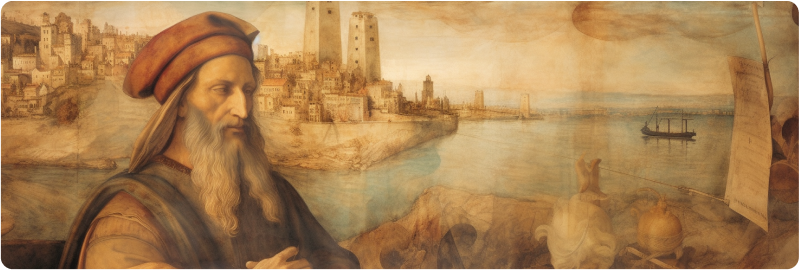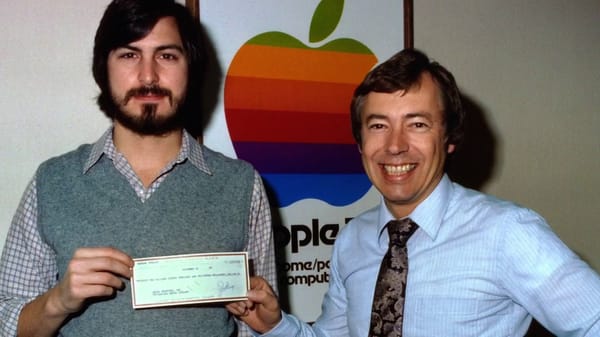Leonardo da Vinci: The Quintessential Renaissance Man
Leonardo da Vinci, born on April 15, 1452, in Vinci, Italy, is widely regarded as one of the most diversely talented individuals ever to have lived. His contributions to art, science, engineering, and anatomy have left an indelible mark on the world. Leonardo's insatiable curiosity and inventive imagination made him the quintessential Renaissance man, a title reflecting his wide-ranging achievements and interests.
Early Life and Education
Leonardo was born out of wedlock to a notary, Piero da Vinci, and a peasant woman, Caterina. Raised by his father, Leonardo received an informal education in Latin, geometry, and mathematics. His artistic talents became evident early on, and around the age of 14, he began an apprenticeship with the renowned artist Andrea del Verrocchio in Florence. Under Verrocchio, Leonardo honed his skills in painting, sculpture, and technical arts.
Artistic Mastery
Leonardo's contributions to art are legendary. His most famous works, "The Last Supper" and "Mona Lisa," showcase his mastery of technique and his deep understanding of human emotion and expression.
- The Last Supper: Painted between 1495 and 1498 for the Convent of Santa Maria delle Grazie in Milan, this mural depicts the moment Jesus announces that one of his disciples will betray him. The composition, perspective, and detailed expressions of the figures make it one of the most studied paintings in art history.
- Mona Lisa: Completed around 1503-1506, the "Mona Lisa" is renowned for its mysterious smile and Leonardo's use of sfumato, a technique that creates a soft, gradual transition between colors and tones. This portrait of Lisa Gherardini, the wife of a Florentine merchant, is perhaps the most famous painting in the world.
Scientific and Anatomical Studies
Leonardo's notebooks are filled with detailed drawings and writings on anatomy, physics, engineering, and botany. His dissections of human corpses led to incredibly accurate anatomical drawings, which were centuries ahead of their time.
- Anatomy: Leonardo's studies of the human body were groundbreaking. His drawings of the human skeleton, muscles, and organs, such as the heart and brain, are not only scientifically accurate but also artistically beautiful.
- Engineering and Inventions: Leonardo designed numerous machines and devices, many of which were conceptualized long before technology could bring them to fruition. His sketches include early designs for helicopters, tanks, and various hydraulic machines. While most of these inventions were never built, they demonstrate his forward-thinking vision and deep understanding of mechanical principles.
Contribution to Science and Philosophy
Leonardo approached science with the same rigor as his art, blending observation with experimentation. His scientific inquiries were driven by his desire to understand the natural world.
- Botany and Geology: Leonardo made detailed studies of plants and their growth patterns, as well as the formation of rocks and fossils. His observations contributed to the early understanding of these fields.
- Physics and Mechanics: His exploration of light, motion, and the mechanics of flight revealed his profound grasp of physical laws, which he documented meticulously in his notebooks.
Legacy
Leonardo da Vinci's legacy transcends his lifetime, influencing countless fields and inspiring generations. His integration of art and science exemplifies the Renaissance ideal of the polymath. Leonardo's work continues to be celebrated for its innovation, creativity, and profound impact on our understanding of the world.
Leonardo da Vinci passed away on May 2, 1519, in Amboise, France, but his genius endures. His artworks remain timeless masterpieces, and his scientific sketches are still admired for their precision and insight. Leonardo's ability to merge art with science makes him an enduring symbol of human potential and creativity.
Conclusion
Leonardo da Vinci's life and work exemplify the synergy of art and science. His relentless curiosity and inventive spirit make him an enduring figure in history, reminding us of the limitless possibilities of human ingenuity. Whether through the enigmatic smile of the Mona Lisa or the intricate designs of his mechanical inventions, Leonardo's legacy continues to inspire and awe, more than 500 years after his death.




